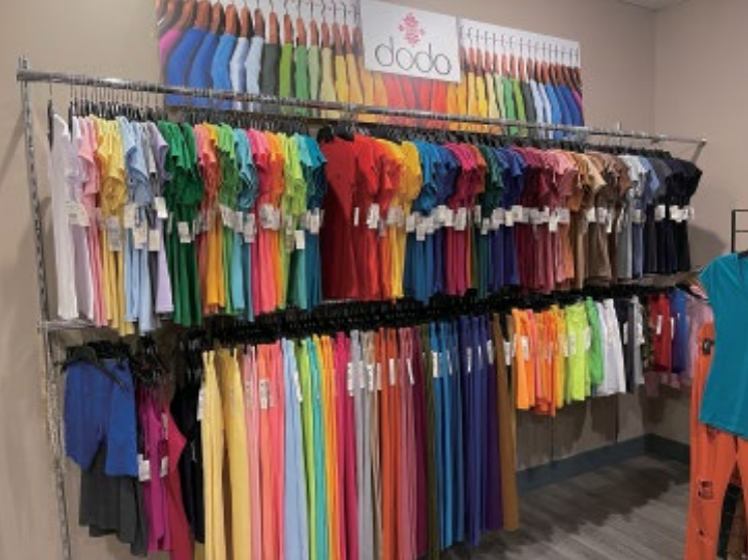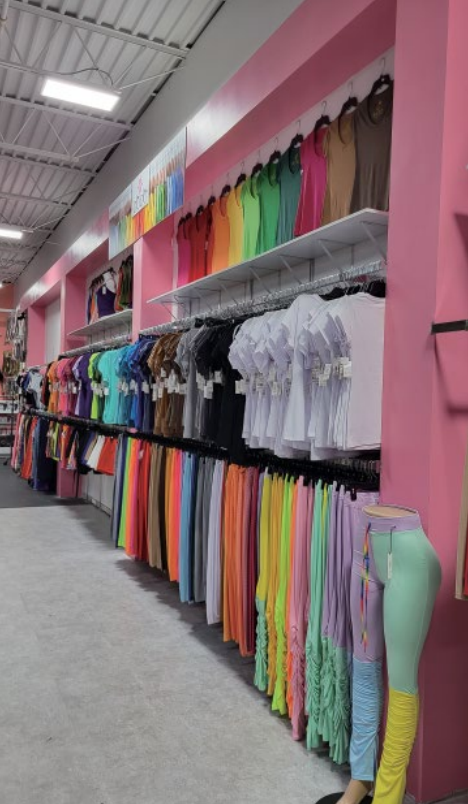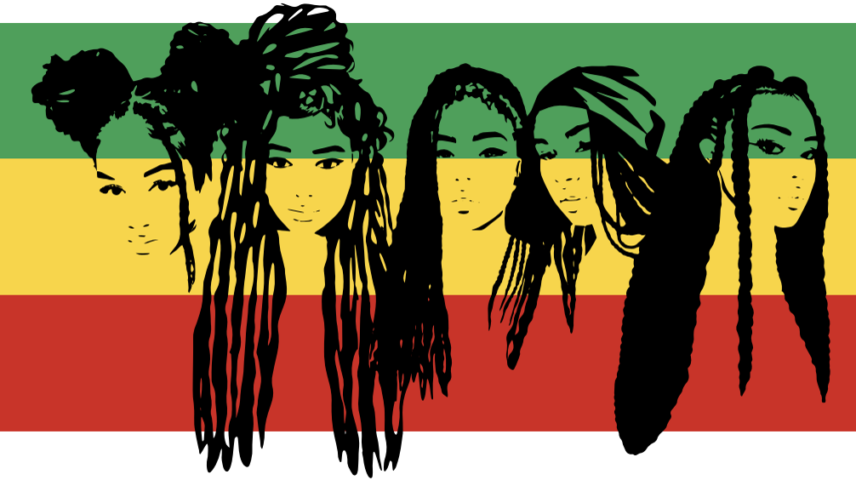“제발 이제 자녀분들에게 경영 전권을 주시라”
A Survival Guide for beauty supplies in Rapidly Changing Market Conditions
“Please Pass the Business Leadership to the Next Generation”

크리스 홍 〈도도 인터네셔녈, 시카고〉
Chris Hong〈DoDo International, Chicago〉
“B/S One-Stop Shopping 매장이 대세”
요즈음 B/S 시장은 one stop-shopping으로 손님의 이탈을 막아야 하는 추세로 가고 있다. 매장의 싸이즈를 점점 넓혀가면서 뷰티에 관련된 모든 아이템들은 구색을 반드시 갖추어야 경쟁력을 갖는다는 것이다.
이런 추세는 B/S 업계에 경우만이 아니다. 월마트에서 Fresh Product (신선한 식품 등)을 판매하기 시작한 이유다. 대형 유통회사들 일수록 더 큰 매장, 더욱 다양하게 제품을 offering하고 있다. B/S 업계 역시 헤어제품을 중심으로 흑인 고객들에게 특화된 상품들과 동네 가게라는 장점을 가지고 대형 유통업체들과 차별화하면서, 아주 독특한 인더스트리를 만들냈다. 하지만 시장은 계속 변해간다. 흑인 고객들의 쇼핑 취향도 또한 바뀌고 있다. 구매의 패턴도 달라지고 있다. 변화에 적응하려는 노력이 항상 계속되어야 하는 이유다.
“One-Stop Shopping Experience is the Trend”
In today’s economy, the B/S market is moving towards preventing customer attrition through one-stop shopping experience. To remain competitive, stores are expanding their sizes and ensuring that they offer a complete range of beauty-related products.
This trend is not limited to the B/S industry alone. It’s why Walmart started selling fresh products and groceries. As we see with our eyes, larger retail companies such as Walmart, Target, etc. are opening bigger stores and offering a wider variety of products. The B/S market that specializes in products for mostly black female consumers, formed a unique industry in which no other big retailers can easily enter and compete. It is an everyday neighborhood store that offers a huge range of hair products and other products that specialize in black female demographic. However, the general retail market continues to change. The shopping preferences of black customers are also evolving, along with changes in purchasing patterns. This is why we must continue our effort to keep up with those changes.
구색/저가 상품만으로는 안되, 수익성 높은 상품으로 밸런스 맞춰야
변화에 적응하려는 노력 가운데 무엇보다도 중요한 것은 수익성을 높이는 일이다. 수익성 낮으면 헛장사가 아닌가. 저렴한 가격과 다양한 상품 종류가 B/S 매장이 갖는 경쟁력의 포인트임에 틀림없지만 수익성이 낮은 제품만으로는 마진 확보가 불가능하다. 특히 공산품의 경우는 경쟁이 심해 마진이 안좋다. 잡화? 중국에서 개발하면 그대로 수입해 판매한다. 똑같은 거 갔다가 판매하니 가격경쟁 속에 파묻히고 만다. 필자가 그래도 수익성이 괜찮은 의류 제품을 강조하는 이유다. 물론 나름대로 유행, 날씨, 싸이즈 등 여러가지 문제가 있기는 하나, 가격적인 측면에서는 의류는 기본 단가가 중상위 객단가를 유지하기 때문에 수익성이 괜찮은 제품이다.
옷의 유통은 기본적으로 manufacture, importer, wholesale, and retail로 연결된다. Manufacture는 아직까지 중국이 제일 잘한다. 가격적인 측면에서 베트남이나 인도 , 남미에서도 생산을 하지만 옷이라는 아이템 자체가 ‘감’ 이 있어야 하는 제품이기에 가격대비 품질과 “느낌”을 내는데 있어서는 아직까지 중국이 제일이다. 유럽에서는 터키가 가격대비 제일 좋고 “느낌”을 내지만 유럽 분위기가 많이 들어가 있어서 미국에서는 잘 안통한다.
Balancing Profitability, Not Just Offering Low-Cost Products
Among the efforts to adapt to change, one of the most important aspects is increasing profitability. If profitability is low, why are we in this business? While offering low prices and a variety of product types are key factors in the competitiveness of B/S stores, relying solely on low-profit products won’t secure margins. Especially for general commodity goods such as nail clippers and shampoos, the competition is intense, and profit margins are not good. General merchandise? Anyone can import directly from China and again price becomes a focal point for competition. I don’t want to give the impression that clothing and fashion products are your answer. However, despite various challenges such as trends, weather, and sizes, clothing maintains reasonable profitability due to its basic unit price being in the mid-to-upper range. When it comes to being unique and different, fashion products are the easiest and affordable solution to show difference compared to larger retailers like Walmart.
Like many products in B/S, the distribution of clothing typically involves manufacturing, importing, wholesale, and retail. Manufacturing is still mostly dominated by China due to its quality and cost-effectiveness. While other countries like Vietnam and India also produce clothing, the product itself requires a certain level of “feel,” and China remains the leader in this regard. In Europe, Turkey offers good quality and “feel” at competitive prices, but European styles may not resonate well in the United States.

의류상품 중국산 질좋고, 경쟁력 있어
예전에는 중국에서 만든 제품이 촌스럽다고 느껴졌었다. 이제는 촌스런 부분이 많이 바뀌고 발전했다. 아직까지 다른 나라들은 이 “느낌”을 낼 만큼 경험과 노하우가 없다. 옷이라는것이 스팩대로 (예 길이는 얼마, 목둘레는 얼마) 만든다 하여 다 똑같게 나오지 않는다. 아무리 똑같이 만들어도 미세한 차이로 인해 어떤 제품은 잘 팔리고 어떤 제품은 팔리지 않는다. 베이직에서도 마찬가지다. 아무리 베이직이라고 해도 아름다운 옷을 입고 싶어하는 여성들의 욕구를 섬세하게 감으로 잡아내지 않으면 결과가 다르게 나온다.
현재 많은 대기업들도 생산기지를 중국에서 다른 나라로 넘길때, 아직까지 의류만은 중국에 중점을 두고 있다. 베트남으로 넘어간 생산기지들 조차도 원자제는 중국에서 수입을 하기 때문에 production line이 전체적으로 개발되어 있지 않다.
이런 얘기를 자세하게 드리는 이유는 중국에서 생산되어 수입되는 옷이 그래도 품질이 괜찮고, 중상위 객단가를 유지할 수 있는 상품이라는 것이다. 다른 어떤 제품보다 고품질 & 고수익성을 유지할 수 있는 상품이다. 특히 B/S 매장에서 흑인용 제품으로 차별화된 상품을 전문적으로 판매할 수 있는 제품이 옷이다. 저희 DoDo 같은 회사가 그런 역할을 전문적으로 하고 있고, 그런 제품들만을 공급하고 있다고 자부한다.
Chinese Clothing Products: High Quality and Competitive Price
In the past, products made in China were often considered tacky. However, much has changed and improved. Other countries still lack the experience and expertise to create the same “feel.” Clothing items are not mass-produced commodities, even if they are made the same way, minor differences can affect sales. This is true even for basic clothing items. Even if clothes are made according to specifications (eg, how long is the length and how much is the neck circumference), they do not all come out the same “feel”. No matter how identically made, some products sell well, and some do not sell due to subtle differences. It is about capturing “beauty” and what makes consumers “feel” beautiful when they wear the products. To compete effectively, retailers need to have a keen eye for products that suit their stores and customers.
While many large corporations are shifting their production bases away from China to other countries, the focus remains primarily on China when it comes to clothing production. Even in cases where production bases have relocated to Vietnam and other countries, the production lines are not fully developed due to the reliance on raw materials imported from China.

대형매장 흑인용 의류상품, 이제 B/S 매장으로 옮겨와
특히 옷장사의 묘미는 사실 아는 분들만 알고 있었다. 그러나 지금은 크게 달라졌다. B/S 경영주가 오히려 옷 전문 매장 옆에 B/S 매장을 오픈하고, 옷을 취급하고 있을 정도다. B/S 매장 경영주가 옷 전문점들과 경쟁해도 이긴다는 자신감을 갖고 있는 것이다. 왜 자신감이 생긴걸까?
우선 주변 상황부터 살펴보자. TJMAXX, ROSS가 옷과 패션 잡화로써 B/S 매장 비슷하게 운영하는 곳들이다. 그들 역시 패션 잡화상품들을 싼값으로 잔뜩 진열해 놓았다. 일하는 직원들이 많지 않아 매장이 엉망이지만 가격이 싸니까 사람들이 찾아와 구매한다. 특히 이런 회사들은 대기업이다. 직접 생산부터 importer이기 때문에 상품 가격이 B/S업계의 도매업체나 소매업체들 보다 월등히 낮다. 여기에 더해서 마진율을 낮게 잡는 박리다매 정책을 현실화 시켰다. 박리다매에만 신경쓰다보니 인종별 전문화에 신경을 쓸 여유가 없다.
큰 Mall에 가보아도 대부분 이름 있는 브랜드를 판매하는 옷가게들이 생각보다 많다. 한인들 중에도 옷가게를 여러개씩 운영하는 분들도 많다. 그만큼 옷장사들이 엄청난 경쟁으로 전쟁을 치르고 있다는 거다. 한인들의 경우 최소 3배의 마진을 붙여야 현상을 유지할 수 있는대도 그렇지 못한 것이 현실이라고 한다. 그 이유는 고객들이 Nike, H&M, Zara 같은 브랜드 제품들에 대부분 관심을 집중하고 있고, TJMaxx, Ross, Walmart 같은 discount chain들의 가격경쟁력 때문에 한인 옷장사들은 점점 더 설 자리를 잃어가고 있다는 것이다.
Clothing products catering to the black community, once found in large retail stores, have now transitioned to B/S stores.
This shift was a well-kept secret known only to those who have experienced selling clothing in a sizable manner. However, that trend has changed vastly and recently as more B/S store owners are taking an initiative by opening B/S stores right alongside clothing-specific stores such as Citi Trends, Rainbow, etc. and expanding their offerings to include more clothing and fashion items. Why those B/S store owners suddenly developed newfound confidence in selling clothing and fashion items and compete against corporate chain stores?
First, let’s take a closer look at the clothing market environment in which B/S compete with. These are stores like TJ Maxx, Ross, Citi Trends, Rainbow, etc. that function similarly to B/S stores by offering clothing and various fashion-related items. Their business strategy is to offer a wide range of fashion products at affordable prices. Those stores are often disorganized with few employees, but people are drawn to them because of their budget-friendly prices. They successfully implemented a “low-margin, mass-volume” strategy, which a lot of B/S stores trying to follow, but the main difference is that these companies are major corporations. They control everything from production to retail so they can control their margin at each level of the distribution. Furthermore, since their primary focus is on cost reduction, there is no specialization in products or services. On the opposite side of the pendulum is clothing stores in large shopping malls. You will be surprised to see how many individual clothing stores selling non-brands items than you might expect. Many Koreans and Arabs own such clothing stores, but they are not attracting as many customers as before since the purchasing pattern diverged into two big sectors – discount chain stores such as TJ Maxx, Ross, Rainbow, Citi Trends for consumers who look for budget items and brand stores like Nike, H&M, and Zara for consumers who look for the brand or “feel” more so than the price. This trend led small clothing retail stores to suffer the most and as a result, more clothing became part of B/S stores.

의류상품 투자비용, 공간대비 잡화보다 적게 들어
이런 의류 인더스트리의 심한 경쟁이 가속화 되면서 부작용(Side effect)로 일부 종류의 옷이 B/S 소매쪽으로 옮겨오기 시작한 것이다. 특히 B/S 매장 싸이즈는 점점 커지고 있는 가운데, 이제 매장을 채울만한 제품을 찾고 있었기 때문이다. 마치 한인 가발가게들이 B/S 매장이 늘어가면서 문을 닫았던 그런 상황이 의류매장에서도 발생한 것이다. 또한 한인 전문 옷장사들이 Discount Chain과 브랜드 제품의 옷에 밀리면서, B/S 매장이 대안이 되었다. 오히려 한인 옷전문점들 보다 B/S 매장에서 옷이 더욱 잘팔리기 시작한 것이다. 특히 Fast Fashion 대표주자인 Forever21 같은 옷 매장이 망하고, 일반 옷매장이 특정 인종이 아닌 전체 일반 소비자들을 타켓하면서, 독특한 체형과 취향을 갖고 있는 흑인 여성들에게 맞는 옷들이 점점 시장에서 사라졌다. B/S 매장에 호기가 온 것이다.
의류 상품은 공간대비 투자비가 잡화보다 적게 든다. 이유는 부피가 작기 때문이다. 또한 공간대비 매출이 높은 편이다. 단가가 높기 때문이다. 큰 가게일수록 옷을 취급하는 비중을 늘리는 이유다. 더구나 옷은 공산품이 아니기 때문에 큰 유통 회사들과도 경쟁이 가능하다. 예를 들어 월마트에서 구입하는 바지가 나이키 바지와 싸이즈도 같고 색상이 같아도, 주머니하나로 차이점을 만들어 가격을 달리하면 구매하는 사람도 달라진다. 이렇듯 옷 하나하나가 개인의 느낌과 판단으로 이쁘고 안이쁘고, 비싸고 싸지기 때문에 얼마든지 차별화를 통해서 장사를 할 수 있게 된다. 하지만 다양한 차별화를 시도하려면 매장에 맞는 제품, 손님이 원할만한 제품을 구비할 수 있는 전문가적인 눈으로 판단하고 공급해야 하는 어려움이 있다. 그러한 이유로 많은 필자는 사람들이 자주 입는 옷을 베이직 제품의 옷을 중점적으로 취급할 것을 권한바 있다. 시간이 지나도 계절이 바뀌어도 트렌드가 바뀌어도 팔수 있기 때문이다.
Investment Costs for Clothing Products Are Lower than General Merchandise
As intense competition in the clothing industry escalated, some categories of clothing naturally started shifting towards B/S stores as an unintended consequence. Notably, as B/S stores expanded in size, they sought products to fill their larger spaces. If you remember in the past, Korean wig stores faced closure due to increasing number of B/S stores. A similar situation unfolded in the clothing sector as B/S stores emerged as an alternative since small clothing and fashion product retailers are failing to stay competitive. Beauty products and fashion items developed synergy resulting in more items are selling in B/S stores in general. Especially when general clothing stores such as Forver21 shifted their focus towards a broader consumer base rather than catering to specific demographics such as racial or size, clothing options suitable for black women with unique body shapes and preferences gradually disappeared from the market, providing an opportunity for B/S stores.
Clothing products have lower investment costs compared to general merchandise, mainly because they take up less space. Moreover, they tend to yield higher sales per square foot due to their higher unitprices. Larger stores often increase their focus on clothing to leverage these advantages. Furthermore, clothing is not a commodity, which allows for competition even with large retail companies. For instance, even if a pair of pants at Walmart is the same size and color as Nike pants, a slight variation in design, such as a different pocket, can lead to a change in price and influence a customer’s purchasing decision. Given that each item of clothing is subject to individual feelings and judgments regarding its attractiveness and cost, businesses can thrive by offering differentiated products. However, achieving this differentiation presents challenges in electing and supplying products tailored to each store and customers‘ preferences with expert precision. This is why I recommend basic clothing items that people frequently wear that are not as sensitive to weather, season, and style – a white t-shirt is a white t-shirt after 10 years.
차세대가 부모님 세대 경영인들께 드리고 싶은 말씀
옷 얘기는 이만 줄인다. 이 기회에 B/S 창업세대 어르신들께 꼭 드리고 싶은 얘기가 있다. 필자는 차세대로서 어른신들의 자녀들과 비슷한 나이다. 연로하신대도 아직도 얘쓰시는 어르신들을 뵈면 안타깝다. 열심히 하셨고, 지금도 그렇게 열심히 하신다. 하지만 이제 세상이 많이 바뀌었다. 장사 환경도 바뀌면서 경쟁의 방법도 달라졌다. 열심히 일한다고 사업이 잘 되는 시대가 아니다. 기술 경영의 시대가 왔다. POS 도입도 필요하고, 제품의 기능도 달라져서 알아야 장사를 잘할 수 있다. 옷을 꼭 취급하시라는 얘기가 아니다. 변화를 시도하셔야 한다. 매장 내부도 이제는 옛날식으로는 안된다. 라이트도 바꾸고, 디스플레이대도 좀 바꾸고, 새로운 직원들 영입하시면 직원들 열심히 가르치셔야 한다. 특히 저같은 젊은 자녀분들을 두신 부모님들은 자녀들이 하는 일을 이해하시지 못해도 자녀들이 하는 일에 자부심을 가지셨으면 좋겠다.
흑인 인구가 4천2백만명이다. 한국 전체 시장이랑 크게 다르지 않다. 흑인들이 아무리 돈이 없다고 해도 그 인구의 절반인 2천백만명이 넘는 인구가 흑인 여성이다. 우리 B/S 매장들이 이들 여성들의 눈높이를 맞추기 위해서 얼마나 노력했는가? 아마존, 월마트, AI 등 세상이 변할 때 발맞추기 위해 얼마나 바뀌었나? 예전처럼 옵션이 없어서 아무거나 갖다 놓는다고 팔리는 시대는 지났다. 흑인들도 인터넷을 접할 수 있고, 교육을 더 받았으며, 차가 없다고 집앞 뷰티에만 가지 않는다.
Passing Business Leadership to the Next Generation
I know I am supposed to give more professional information about clothing and selling clothing in B/S store. However, I truly believe the B/S industry has a bigger problem, and I dearly want to send out a message to many B/S owners from previous generation. I am 36 years old, so I am about your children’s age. When I see old Korean couples working so hard to maintain their stores, I feel sad. They worked so hard and still working hard, yet the world has changed, and business environment changed. The competition changed but we are still doing the business the same way. Working hard is fundamental but that does not guarantee success like in the past. We must think about ways to do business more efficiently and effectively. Human labor can only do so much. They can only do one task at a time.
I’m not saying you must sell clothing. I am saying that change is inevitable. Please improve your display, change lights, implement POS, teach your employees. Do not give up and continue to grind, which the older generation is so good at. Be proud of what you have achieved. Your children must know that you put your life for your family.
The black population is 42 million in the US. It is not very different from the entire Korean market. No matter what their economic situation is, we have a market that caters that many potential consumers. Even if we consider black women only, 21 million is still a huge number and what have we done much to capture that market? How much have you changed to keep up with the changing world? It is no longer you put any item in B/S stores, and they sell like in the past. Black people can drive, have access to internet, and are more educated. I often make conversation with random black women, and they say they are sometimes embarrassed going into B/S stores, so they quickly go in and just buy what they need and get out as quickly as possible. This is the reality.
3D 업종같은 B/S 매장 경영, 차세대들은 원치 않아
차세대에게는 B/S 비즈니스 참 힘든 3D(dirty, difficult, and dangerous)업종이다. 계속 리필하고 정리하고 관리해야 한다. 돈도 좋지만 자녀들에게 그런 일만을 시키고 싶지는 않으실 거다. 어르신들은 “너네는 벤더니까 쉽게 말할 수 있지?”라고 하신다. 하지만, 제가 보는 여러분들은 당장 얼마를 샀고 얼마를 팔았는지도 그냥 빈공간 보면서 일하는데, 누가 훔쳤는지 아님 뒤에 창고에 남아 있는지, 그정도의 데이터도 모르는데 어떻게 더 일을 잘 하실 수 있겠는가? 컴퓨터를 몰라서 영어를 몰라서 어려워하시는 부분은 많이 이해한다. 하지만 생각의 변화를 가지고, 하시려는 의지를 가지면 방법은 찾을 수 있다고 생각한다. 여러분들과 젊은이들이 같이 하면서 바꾸자는 것이 저의 생각이다. 그래서 저같은 젊은이들은 옷장사를 하면서 여러분들이 대부분 쓰지도않으시는 바코드도 상품에 붙치고, MSRP(공장이 권유하는 소매가격)도 골머리 썩어가며 붙치고, 새로운 제품 때맞춰 공급하고, 베이직 안떨어트리게 채워놓고, 오더한 제품들 틀리지 않게 바코드로 패킹리스트 만들고… 조금이나마 저희 옷을 판매하시는데 있어서 적은 인력으로라도 쉽게 장사하실 수 있는 방법을 계속 찾고 있다. 이런 것을 했을 때 “너네만 좋지?”라는 생각을 버려주시기 바란다. 저희도 하기 어렵고 힘들고 돈도 많이 든다. 매장으로부터 엄청난 반발도 있다. 제가격 받으시라고 하면, 차라리 그럴거면 좀더 싸게 만들라는 거다. 가격표를 붙여놓으면 점주분들이 받고 싶은데로 가격을 받으실 수 없으시니 그러시는 거다. 하지만 아시다시피 지금 업계에는 인력부족에 시달리시지 않나.
Managing a B/S store requires heavy human labor, and it’s something the next generation isn’t interested in pursuing.
Running a B/S business can be a challenging 3D (dirty, difficult, and dangerous) endeavor for the younger generation. It involves constant restocking, organizing, and management.
While the financial rewards may be enticing, many of us don’t want our children to be confined to such work alone. Some older individuals might say, “You guys are vendors, so it is easy for you to say, right?” However, from my perspective, some people merely glance at the empty spaces to figure out their purchases and sales. They don’t even know if theft has occurred or if items have been left behind in the warehouse. How can they improve their operations under such circumstances? I understand that certain aspects can be challenging, especially if one is not well-versed in computers or English. Nonetheless, I firmly believe that if you change your mindset and have the determination to adapt, you can find a way.
To help retailers, vendors like us put barcodes, which almost no stores use. We put MSRP (price) even if we get complaints that stores cannot charge little bit more. We make sure we have packing list and use computer system to do packing so that retailers don’t have to recheck against the invoice. We make sure we constantly supply basic items so that retailers do not miss out on revenue. We try really hard to help retailers’ problems when they do business with us. It is not just about selling. It is about solving problems together. We know lack of workers is a problem. We know lack of quality in the workforce is a problem. So as your vendor, we try to make it easy and easier, yet help you become better. I ask many customers to implement POS and send us the sales data not because we can make more money. We understand if you don’t do well then, we don’t do well. We want to figure out what is right product and quantity for your store. We want you to have some time and energy to focus on categories of items that require your attention. If you don’t worry about at least one thing, you can do better in other areas, which will make the store better in the end.
I really hope that more vendors know that retailers must do well for all the stakeholders in this industry to succeed. If they have that mindset, they should implement strategies that help retailers. On the other side, I really ask retail owners to change and be cooperative. That does not mean buy everything. It means working together. I hope retail owners do not think that our actions are only good for us. It is extremely challenging for us too. It’s tough work, and it involves significant costs. There’s often resistance from store owners as well. However, we all know what the problems are, and we must solve together.

IT 세대에게 이제 경영 전권을 맡기시라
어르신들이 열심히 일하셔서 잘 키워주셨다. 여러분 자녀들은 배운 것도 많고, 아는 것도 많다. 그래서 좀 더 쉬운 방법, 좀 더 머리로 사업을 하면서, 휴가도 즐기고, 삶도 즐기면서, 가족과의 시간도 중요하게 생각하는 어른들로 자라났다. 어르신들이 원하는 행복한 삶을 추구하는 건강한 자녀들로 성장했다. 어르신들이 하시던 힘든 일을 그대로 자녀들에게 하게 하실 수는 없지 않겠는가. 가게를 몇개를 운영을 해도 재고도 모르고 매출분석도 어려운, 체계가 잘 안 잡힌 매장에서는 여러분들의 자녀들은 사업을 잘 할 수가 없다. 열심히 안하고 열정이 없는 것이 아니다. 젊은 사람들은 교육을 그렇게 받지도 않았다. 세상이 많이 바뀌었다. 더 이상 그런 여러분 식으로 비즈니스를 운영하는 곳은 이제 없다. 그러니 누가 그런 힘든 일을 하려 하겠는가? B/S 사업이 흑인에게 특화된 시장이고, 많은 사업적 포텐셜을 가지고 있지만 오히려 점점 젊은이들은 기피하고 있다. 여러분들이 당연하다고 생각하는 것들을 그들은 그렇게 생각하지 않는다. 세상은 QR 코드 하고 있는데, 우리는 아직 바코드 조차 제대로 사용하지 못하고 있다.
젊은 사람들은 가게에 출근을 하면 제일 먼저 전산부터 만진다. 돈이 얼마나 들어가고 돈이 얼마나 나가며 얼마가 인벤토리로 있고 어떤 제품이 잘 나가고 어떤 제품이 잘 안나가서 세일을 쳐야하는지를 그들은 분석한다. 부모님이 모두 경험과 머리에 의존하시는 것들이다. 경험도 없고 몸을 써서 일해보지도 않은 자녀들이다. 배운게 많다고 갑자기 와서 뚝딱 변화시킬 수는 없다. 오히려 무엇을 해보려고 하는 시도 때문에 문제를 일으키는 경우가 많다. 더욱더 큰 문제는 새로운 것을 시도해보려고 하면 부모님께서 반대를 하신다. 거기에 더해 시작을 했을 경우 끝을 봐야하는데 바코드 작업만 해도 아무리 작은 가게에서도 얼마나 어려운일지 모른다. 중간에 포기하는 이유다. 도와주시고 실패해도 믿어주시고 따라주셔야 한평생을 이루어 놓은 것이 다음 세대에 잘 전달되어 이 시장 자체를 멋지게 주도하게끔 협력해야 한다. 젊은이들이 마음껏, 소신껏 매장을 경영하도록 기회를 주시라. 실패도 성공으로 가는 커다란 자산이 될 수 있다.
Let the IT generation take full control of management.
It’s time to allow the IT generation to take full control of management. The older generation worked hard to raise and educate younger generation, and now it’s younger generation’s turn to step into leadership roles. The younger generation have acquired knowledge and skills that make business operations more efficient. As a result, they can run businesses with a bit more ease, enjoy vacations, savor life, and prioritize time with their families. They have grown up to become responsible adults who seek the happiness that the elders desire for their children.
The older generation have built from nothing to something with their sweat and blood. Let’s not throw that away. The younger generation need to know that if they bring what they learned, they can innovate this industry. The task is hard because the foundation is very lacking – Even if the owner has multiple stores and a lot of money, the next generation may struggle to succeed in an environment that lacks proper organization, where inventory remains a mystery, and sales analysis is almost none exixtent. It’s not that the younger generation lacks the drive or passion; rather, they were raised and live in a different world. The business landscape has transformed significantly, and the old methods might not be as effective anymore. Given these changes, it’s understandable that young people might be reluctant to engage in such demanding work. The B/S business, specializing in products for the black community, holds substantial potential. However, younger individuals may not perceive the opportunities because the industry is so antiquated. When the children don’t want to be in the store their parents make living, who would like to come into those stores and buy products?
Today, the world operates with QR codes and AI, while the B/S industry struggle to utilize barcodes effectively. When young people join the workforce, their first initiative is to figure out what is the sales, what is the inventory, and what are the costs. Those are the fundamentals to run a business. What they learned from school and other workplacees was to analyze financial data, manage inventory, identify top-selling products, and strategize promotions. However, they don’t have any of those data. Instead, they need to rely on their parents’ experience and knowledge inside their brain. How can they be good when they were not provided with the basic tools to succeed? This differs from the manual, experience-based approach the old generation relied on. The industry can’t expect young individuals to revolutionize the business instantly just because they’ve acquired knowledge. In fact, well-intentioned changes can sometimes lead to problems, and our resistance to change can exacerbate the situation.
Furthermore, the reality is that any attempt to change bares too much work because the gap between the Amazon world and B/S world is so huge and getting larger. As a result, young people may become discouraged and abandon their efforts midway. It’s essential that the older generation offer support, trust, and guidance, even if they encounter setbacks. Both generations must collaborate to ensure that the legacy we have built throughout our lives is passed on successfully to the next generation, allowing them to lead this market effectively.
Let’s provide young people with the opportunity to run stores according to their vision and convictions. Even failures can serve as valuable steppingstones toward eventual success.
〈필자: 크리스 홍, DoDo International 대표〉





